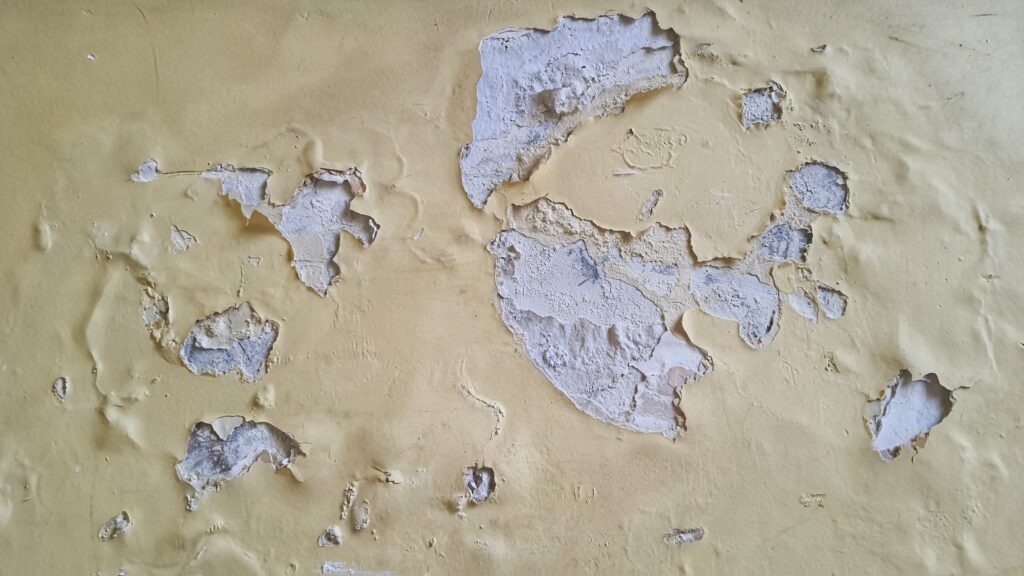
The United States insurance and real estate industries are doing everything they can to avoid paying victims of lead paint poisoning the financial compensation they deserve for their injuries.
Insurance companies are avoiding liability for lead paint poisoning by putting lead paint exclusions in their policies, and real estate owners are creating webs of limited liability companies (LLCs) with few assets to shield themselves from liability in lawsuits.
Insurance companies have been able to exclude lead from their policies because of the approval of state officials and a lack of public attention, and these exclusions have eased pressure on landlords to fix their rental properties.
It is almost impossible for a parent to recover money for their child when an insurance policy has a lead exclusion and the landlord has few assets. Property owners with substantial assets have been shielding themselves from liability by holding their properties in LLCs with few assets to recover from.
Some states have limited or attempted to ban lead exclusions from insurance policies, but these measures have been opposed by the real estate and insurance industries. The insurance industry’s position seems to be that landlords and local housing or health regulators need to fix the problem before children are poisoned, and that banning exclusions would drive up premiums.
“Efforts to resolve this longstanding problem should be focused on eliminating the lead paint risk from rental properties,” Ken Stoller, senior director at the American Property Casualty Insurance Association, told the New York Times.
“It’s like insuring a burning building that is already on fire,” said New York Insurance Association president Ellen Melchionni, adding, “we don’t think forcing insurance companies to pay for a known hazard will be the solution.”
Some have suggested that insurers should encourage landlords to solve the problem before children are poisoned by requiring landlords to fix lead hazards before giving them insurance coverage.
A Textbook Example
A 21-year-old single mother and her daughter, according to the New York Times, moved into a Richmond, VA apartment in 2008. The child, who was just short of one year old when she moved in, started regressing months after moving in, crying frequently, her vocabulary no longer growing, having difficulty picking up toys, and losing the strength to open the refrigerator, which she previously needed to be scolded for doing.
The mother took her daughter to a doctor in 2009 after the child cried for almost a day and a half straight, and she was told the next day to rush her child to a hospital, as the child had six times as much lead inside of her as what the C.D.C. considers an elevated level of lead. An inspector then found peeling paint and lead hazards in the apartment.
The child later became aggressive and easily agitated, banging her head against walls and hitting herself. The child suffered from hyperactivity, a short attention span, and required tutoring and behavioral therapy.
A lawyer eventually filed a lawsuit on behalf of the daughter in 2017, and, after filing the lawsuit, learned that the apartment’s insurance policy had a lead exclusion.
In 2018, a judge awarded the child $2 million in damages. However, the owner of the building resisted paying the award and the building was held by an LLC. The LLC held few assets that the mother and daughter could recover money from by 2019, and the child’s mother eventually agreed to a $140,000 settlement, of which about $70,000 went into court and legal fees.
“You can’t have it both ways – be a big company when it benefits you to generate revenue and business, and then hide behind an LLC when you are sued in an attempt to escape accountability,” a lawyer told the New York Times.
‘A Slow-Moving Catastrophe’
Around 500,000 children under the age of 6 in the United States have elevated blood levels of lead, and COVID-19 has only exacerbated the problem. The pandemic has led to less rental inspections, increased exposure to lead since people have spent more time indoors at home, and testing of children fell by as much as half at times during 2020.
“It’s a slow-moving catastrophe that people have gotten used to,” said New York state senator Sean Ryan, who introduced a lead insurance exclusion bill which was stalled in the state senate’s insurance committee after facing strong opposition from insurers, who claimed the bill would destabilize the market.
No lead exposure is safe, according to the CDC, and the intelligence, behavior and learning ability of children can be affected by even low levels of lead exposure. These effects end up costing taxpayers billions of dollars every year by necessitating special education and medical treatments for children.
Congress put money in the recent infrastructure bill to replace lead pipes, but removed funding for the much bigger issue of lead paint in older buildings, which is responsible for up to 70 percent of lead poisoning in children. The Build Back Better bill, which stalled in Congress in December, contained $5 billion for remediating residential lead paint hazards.
New Hampshire has prohibited lead exclusions since 2019, encouraging property owners to fix their properties before they end up uninsured. Rhode Island requires insurers to cover property owners who have gone through inspections or abatement and proven their properties to be safe. If insurers decline to provide coverage and lead hazards remain, the insurers must direct property owners to a state-sponsored program, but there is no mandate to purchase lead coverage from the state.
Lead was added to paint for decades to make it more durable and moisture-resistant. While the health risks of lead have been known for centuries, lead paint wasn’t banned in United States homes until 1978.
About 29 million housing units still contain significant lead paint hazards, according to the federal housing department, and around 3.3 million of these units have young children living in them.

